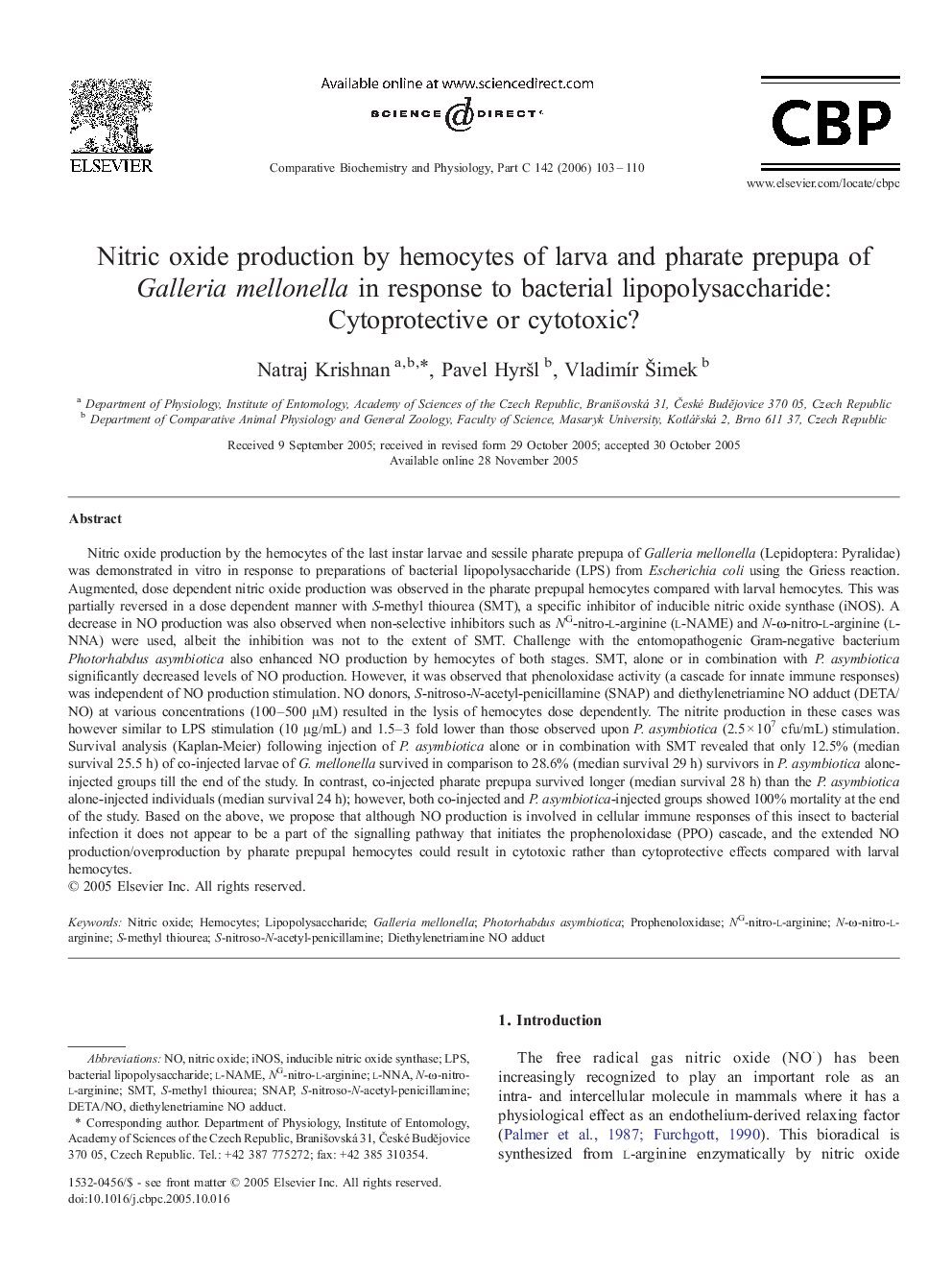| کد مقاله | کد نشریه | سال انتشار | مقاله انگلیسی | نسخه تمام متن |
|---|---|---|---|---|
| 1978296 | 1539302 | 2006 | 8 صفحه PDF | دانلود رایگان |

Nitric oxide production by the hemocytes of the last instar larvae and sessile pharate prepupa of Galleria mellonella (Lepidoptera: Pyralidae) was demonstrated in vitro in response to preparations of bacterial lipopolysaccharide (LPS) from Escherichia coli using the Griess reaction. Augmented, dose dependent nitric oxide production was observed in the pharate prepupal hemocytes compared with larval hemocytes. This was partially reversed in a dose dependent manner with S-methyl thiourea (SMT), a specific inhibitor of inducible nitric oxide synthase (iNOS). A decrease in NO production was also observed when non-selective inhibitors such as NG-nitro-l-arginine (l-NAME) and N-ω-nitro-l-arginine (l-NNA) were used, albeit the inhibition was not to the extent of SMT. Challenge with the entomopathogenic Gram-negative bacterium Photorhabdus asymbiotica also enhanced NO production by hemocytes of both stages. SMT, alone or in combination with P. asymbiotica significantly decreased levels of NO production. However, it was observed that phenoloxidase activity (a cascade for innate immune responses) was independent of NO production stimulation. NO donors, S-nitroso-N-acetyl-penicillamine (SNAP) and diethylenetriamine NO adduct (DETA/NO) at various concentrations (100–500 μM) resulted in the lysis of hemocytes dose dependently. The nitrite production in these cases was however similar to LPS stimulation (10 μg/mL) and 1.5–3 fold lower than those observed upon P. asymbiotica (2.5 × 107 cfu/mL) stimulation. Survival analysis (Kaplan-Meier) following injection of P. asymbiotica alone or in combination with SMT revealed that only 12.5% (median survival 25.5 h) of co-injected larvae of G. mellonella survived in comparison to 28.6% (median survival 29 h) survivors in P. asymbiotica alone-injected groups till the end of the study. In contrast, co-injected pharate prepupa survived longer (median survival 28 h) than the P. asymbiotica alone-injected individuals (median survival 24 h); however, both co-injected and P. asymbiotica-injected groups showed 100% mortality at the end of the study. Based on the above, we propose that although NO production is involved in cellular immune responses of this insect to bacterial infection it does not appear to be a part of the signalling pathway that initiates the prophenoloxidase (PPO) cascade, and the extended NO production/overproduction by pharate prepupal hemocytes could result in cytotoxic rather than cytoprotective effects compared with larval hemocytes.
Journal: Comparative Biochemistry and Physiology Part C: Toxicology & Pharmacology - Volume 142, Issues 1–2, January–February 2006, Pages 103–110